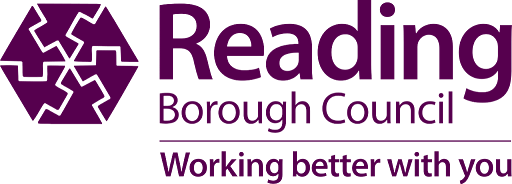Reading’s Biggest Ever Transport Consultation Begins
PEOPLE are being asked to help shape a future vision for transport in the town for the next 15 years, as part of one of Reading’s biggest ever public consultation exercises launched today (July 29th).
Whether its traffic, parking, school traffic, air quality or cycle infrastructure, transport is consistently Reading’s biggest talking point. A major public consultation will now ask residents, businesses, organisations and interest groups how they would tackle Reading’s challenge, with a particular focus on congestion and poor air quality. The final result will be a new Local Transport Plan – a plan to manage Reading’s transport network up to 2036. An online survey, leaflets to every household in Reading, themed discussion sessions, public drop-in events, school workshops and meetings with neighbouring local authorities and transport operators all form part of the consultation exercise, which runs for eight weeks through the summer. The online survey will be the main vehicle for public responses and can be found at https://www.pclconsult.co.uk/transport2036. People will be asked to complete a range of questions around their travel choices and preferences. They will also be asked what they think needs to change in the future to tackle Reading’s congestion, air pollution and climate change emergency challenge. With one of the UK’s fastest growing economies, Reading is home to a large number of local, national and international companies. It is the major centre for employment, leisure and education in the Thames Valley region. Demand for new homes has never been higher. While welcoming this success, it places a real strain on the town’s roads and transport infrastructure. Reading continues to face serious challenges in terms of commuter congestion and poor air quality, which impacts on the health of local residents. They include:- Major roads such as the IDR (inner distribution road) carry ‘through traffic’ (without stopping in Reading) that creates additional noise and air pollution. Our analysis shows up to a third of trips made in peak periods could avoid using the IDR as a through route, if enhanced orbital routes were provided.
- 86% of people who commute into Reading for work from outside the borough travel by car.
- Reading has a number of hotspot locations which currently exceed national legal limits for Nitrogen Dioxide (NO2) including on the Oxford Road, Prospect Street, Cemetery Junction/London Road, Friar Street and locations on the IDR.
- Reading’s population will increase by around 12% from 162,666 in 2016 to 181,900 in 2039.
- 671 new homes are planned in Reading every year to 2036 with 801 every year in neighbouring Wokingham and 990 every year in South Oxfordshire.
- 5.4% of adults in Reading cycle three times a week and just over a quarter walk three times a week.
Councillor Tony Page, Reading Borough Council’s Lead Member for Strategic Environment, Planning and Transport, said:
“Congestion and poor air quality is having a negative effect on the health and wellbeing of residents in Reading. Thousands of new homes being built in and around the town over the next few years will add to the number of journeys on a road network which is already at capacity. It is a situation no responsible local authority can ignore. “Reading’s challenge is to successfully absorb the growth in housing, jobs and commuting in the future, whilst protecting the health of its residents. The Council does not have all the answers, which is why we are now asking residents, businesses, schools, interest groups and neighbouring local authorities for their input. This is Reading’s biggest ever transport consultation and will play a big part in shaping the future of transport in the town. “Earlier this year the Council committed to work with partners towards a carbon neutral Reading by 2030. That sort of change would require a major shift in people’s travel choices and sustainable transport solutions which offer realistic alternatives to the private car. Alongside other existing strategies, like the Reading 2050 vision, our new Local Transport Plan will underpin how we go about meeting that future challenge.”Councillor Adele Barnett-Ward, Chair of the Clean Air and Safer Transport Forum, said:
“We already know transport is Reading’s biggest talking point. This is now an open invitation to people to engage with the Council and play their part in helping to design a clean and sustainable transport system in Reading which both protects our future environment and protects the health of people who live in Reading. “With Reading’s success comes some major challenges in terms of congestion and air pollution. The survey is designed to gather information on how people choose to travel, why they make those choices and what would convince them to consider alternatives in the future. “Everybody has an opinion on transport in Reading. Now is the time for people to make their voices heard.” The public consultation exercise launches today (July 29) and runs until 20th September. As well as a series of themed focus groups including with the Citizen’s Panel, key stakeholder meetings and pop-up events there will be public drop-in sessions where people can talk to Council transport officers about the consultation and the town’s new Local Transport Plan. They are:- Tuesday Aug 6 (3pm to 6.30pm) South Reading Community Hub
- Thursday Aug 15th (3pm to 7pm) Church House, Caversham
- Wednesday Aug 28th (3pm to 7pm) Salvation Army Reading West, 522 Oxford Road
- Wednesday Sep 4th (3pm to 7pm) Waterhouse Chamber, Reading Town Hall
- Tuesday Sep 10th (7am to 10am) Reading Station Forecourt
